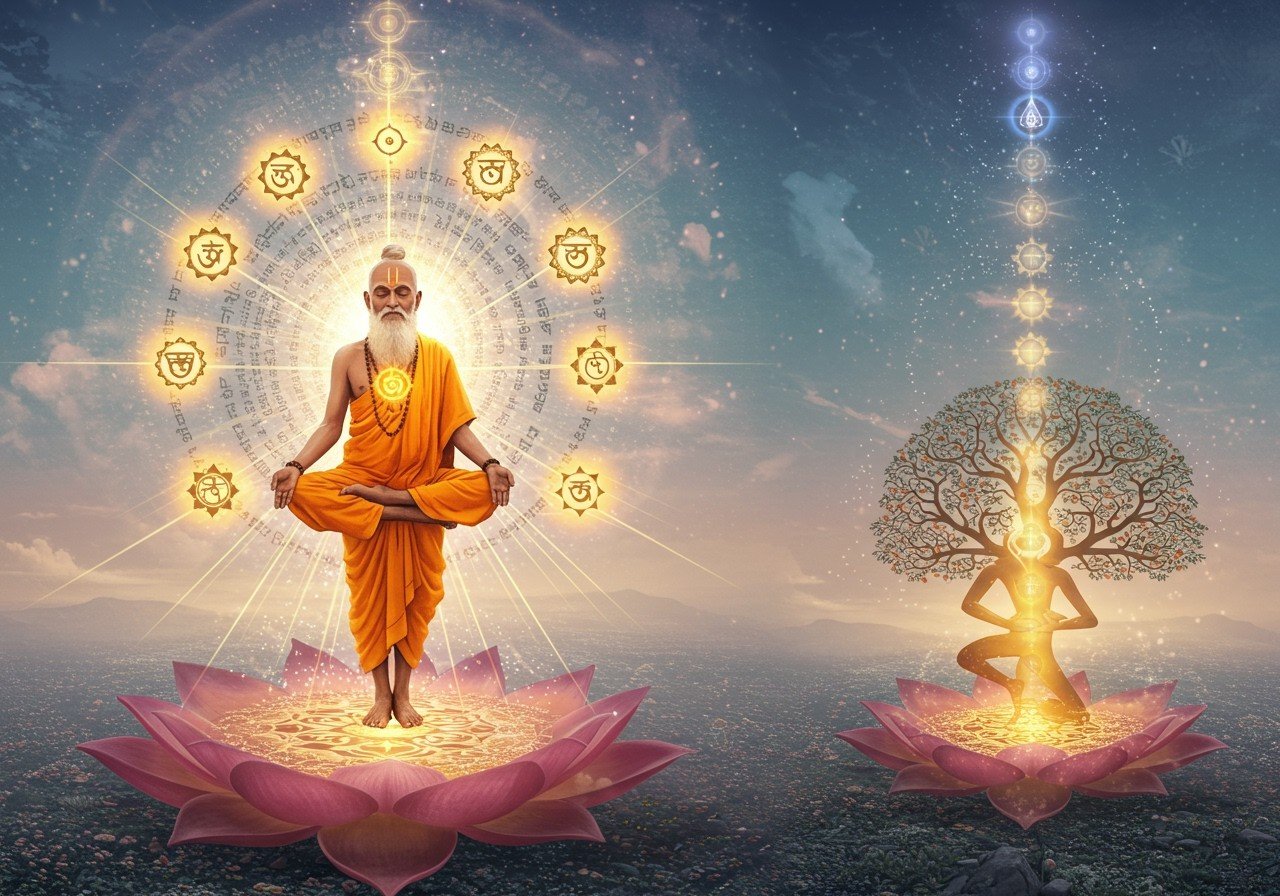
The Yoga Sutras of Patanjali are a foundational text for understanding yoga’s essence. Penned by the sage Patanjali in the early centuries CE, these 196 sutras (aphorisms) offer profound insights into the mind, providing a pathway to wisdom and self-realization. Patanjali meticulously compiled this collection, drawing from ancient wisdom traditions like Samkhya, Buddhism, and pre-existing Yoga practices. These sutras form the bedrock of yoga philosophy, shaping yoga practices across the globe.
Delving into the Wisdom of the Yoga Sutras
The Yoga Sutras serve as a compass, guiding practitioners toward spiritual awakening and a deeper understanding of themselves and the universe. These concise verses act as threads, weaving a rich tapestry of yoga philosophy, leading toward liberation (Kaivalya).
Structure of the Yoga Sutras
Patanjali organized the Yoga Sutras into four distinct chapters, each focusing on specific aspects of yoga:
- Samadhi Pada: This chapter, containing 51 sutras, explores the nature of Samadhi, the ultimate state of meditative absorption. It delves into the essence of yoga and the role of the mind in achieving this state of profound stillness.
- Sadhana Pada: Comprising 55 sutras, this chapter outlines the practical steps of yoga, including the renowned eight limbs of Ashtanga Yoga. It provides a framework for practicing Raja Yoga, a path to self-realization.
- Vibhuti Pada: With 56 sutras, this chapter delves into the extraordinary powers (vibhutis) and insights that can arise from dedicated and deep yogic practice. It explores the subtle realms of consciousness and the transformative potential of yoga. It deals with more penetrating and powerful areas of oneself and includes the last three limbs of Raj Yoga, which are the results of practicing the first five limbs.
- Kaivalya Pada: This final chapter, consisting of 34 sutras, discusses the ultimate goal of yoga: Kaivalya, or liberation. It outlines the path of renunciation, guiding practitioners towards freedom from worldly attachments and the realization of their true nature.
Key Concepts within the Yoga Sutras
Grasping these key concepts is crucial for understanding the Yoga Sutras’ profound teachings:
- Sutras: These are concise verses, packed with wisdom and designed for deep contemplation. Each sutra serves as a point of focus for reflection and understanding. They offer concentrated bursts of insight.
- Ashtanga Yoga (Eight-Limbed Yoga): This is perhaps the most well-known aspect of the Yoga Sutras. Ashtanga Yoga outlines eight interconnected limbs that lead to Samadhi. These limbs encompass ethical principles (Yamas and Niyamas), physical postures (Asanas), breath control (Pranayama), sensory withdrawal (Pratyahara), concentration (Dharana), meditation (Dhyana), and ultimately, absorption (Samadhi).
- Samadhi: Patanjali defines ‘yoga’ as ‘Samadhi,’ the state of complete absorption. In Samadhi, the individual consciousness merges with the universal consciousness, transcending the limitations of the physical world. Achieving and practicing Samadhi is said to bestow yogic powers.
- Kaivalya (Liberation): Kaivalya represents the ultimate goal of yoga. It’s a state of absolute freedom and self-realization, achieved through the stilling of the mind and detachment from worldly desires. It is liberation through profound self-awareness.
Practical Applications of the Yoga Sutras
The Yoga Sutras are not merely theoretical; they offer practical tools for cultivating awareness, compassion, and inner peace in everyday life. The wisdom of the sutras goes far beyond the yoga mat.
- Ethical Living: The Yamas and Niyamas, the first two limbs of Ashtanga Yoga, provide ethical guidelines for navigating relationships and interactions. These principles promote non-violence, truthfulness, non-stealing, moderation, and contentment, fostering harmonious living. They offer a compass for moral conduct.
- Mindfulness and Stress Management: The practices of Pranayama (breath control), Pratyahara (sensory withdrawal), Dharana (concentration), and Dhyana (meditation) cultivate mindfulness and inner calm. These techniques help manage stress, reduce anxiety, and enhance emotional regulation. They provide anchors in the storm of daily life.
Explore our range of products at poojn.in to enhance your spiritual journey. We offer a variety of items that can support your yoga practice, including:
- Sacred Thread (Kalava/Raksha Sutra): This sacred thread is traditionally worn during spiritual practices and serves as a tangible reminder of one’s commitment to the yogic path.
- Kush Asan: A traditional mat made from Kush grass, ideal for meditation and yoga practice, connecting you with nature and enhancing your spiritual focus.
For further exploration into the world of yoga and spirituality, visit our blog for informative articles: Yoga and Spirituality: A Harmonious Connection and Finding Your Inner Calm: Meditation Techniques for Beginners.
Embracing the Path of Patanjali’s Wisdom
The Yoga Sutras of Patanjali provide a timeless roadmap for self-discovery and spiritual growth. By studying these teachings, we connect with a lineage of wisdom that continues to inspire and transform lives. Patanjali’s guidance encourages us to explore our inner landscape, cultivate self-awareness, and embrace the journey toward peace and harmony.
As you delve into the sutras, remember that yoga is a lifelong exploration, an ongoing process of learning and unfolding. The wisdom contained within these ancient texts offers profound insights that can enrich every aspect of our lives.


